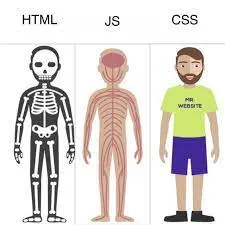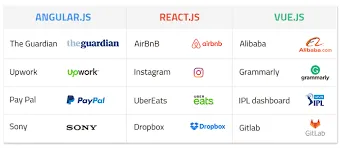HTML, CSS, JavaScript
As a web developer, the three main languages we use to build websites are HTML, CSS and JavaScript. Javascript is the programming language, we use HTML for the structure and CSS for the styling the layout of the webpage.
Git and GitHub
Git and GitHub are not the same thing. Git is an open-source version version control tool created in 2005 by developers working on Linux operating system. GitHub is a company founded in 2008 that makes tools which are integrated in git.
Libraries (ReactJs, Vue, Angular)
Now, JavaScript is capable of doing almost anything and works on several platforms and devices including IoT. And with the recent SpaceX Dragon launch, JavaScript is even in space.
One of the reasons for its popularity is the availability of a large number of frameworks and libraries. They make development much easier compared to traditional Vanilla JS development.
There are libraries for almost anything and more are coming out almost every day. But with so many libraries to choose from it becomes difficult to keep a track of each one and how it might be tailored specifically to your needs.
Below is an illustration of an image showing some of the big sites build by the three best libraries of JavaScript.
Node.js, Ruby, Python
Why Choose Node.js?
- Node.js is fast and performance-oriented. It is built on a v8 engine which is very effective and scalable.
- Node.js is more suitable to integrate with IoT protocols. It supports MQTT and WebSockets, so it is more convenient to use in IoT apps. Hence they use the publish-subscribe-based messaging protocol.
- Node.js has a lot of features that are useful for IoT apps. For example, there are 80 packages for intel IoT Edison, Arduino, and Raspberry. There are other 30 packages for sensors, beacons, and other tools.
- Node.js is more efficient and scalable than other frameworks. Here CPU and RAM are not overloaded. That’s why it’s primarily used in modern companies.
Why Choose Python?
- It is an easy-to-learn language that allows for faster development of the application. Easy to learn capability makes it easy to build IoT components.
- Python supports the latest programming trends, so it is a well-developed language to develop IoT apps.
- Python allows and makes it easy to read other people’s code. It helps to understand long-written code.
- Python supports all the most used operating systems like Windows, Linux, macOS, and also Arduino. So, it will be easier for the deployment of apps to other machines.
- Python allows testing a single piece of code even after compilation, making Python win the race for IoT app development.
Why Choose Ruby?
- Ruby is object-oriented and a general-purpose language. A beginner in programming can also understand Ruby. So, if you are developing an IoT app on Ruby, then it is moderately easier than others.
- But for the IoT app development, it is cost-effective in some projects.
- Ruby is the more straightforward language. That’s why developers can build apps fast on Ruby.
- In some complex IoT app development, Ruby provides some extensive support.
- For some IoT projects, apps scaled quickly.
Database(MySQL)
MySQL, the most popular Open Source SQL database management system, is developed, distributed, and supported by Oracle Corporation.
Some of the features of MySQL:
- MySQL is a database management system.
- MySQL databases are relational.
- MySQL software is Open Source.
- The MySQL Database Server is very fast, reliable, scalable, and easy to use.
- MySQL Server works in client/server or embedded systems.
- A large amount of contributed MySQL software is available.



Comments
Post a Comment